#bauge
Explore tagged Tumblr posts
Text
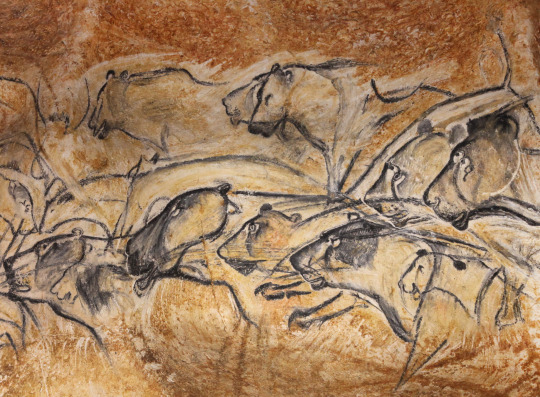
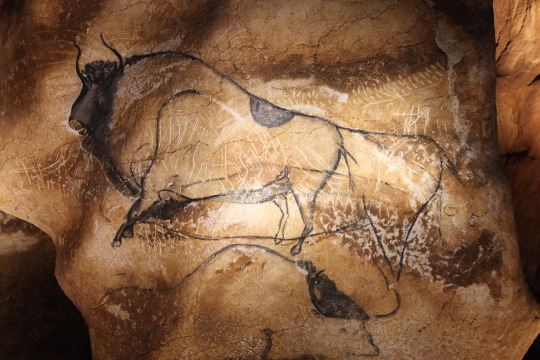


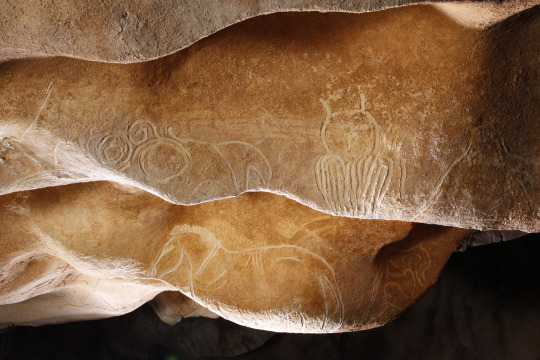



La semaine dernière, j'ai retrouvé mes amis Julien et Katie à Remoulins dans le Gard (Languedoc). On est allés à Vallon-Pont-d'Arc (Ardèche) visite la réplique de la fameuse Grotte Chauvet dont les peinture rupestres datent de l'aurignacien.
Bon, aucune photo n'est de moi (interdit à l'intérieur) ; toutes viennent du site de chauvet2.
Lions des cavernes (très impressionnants), bisons, au sol des bauges ("nids") d'ours, Rhinocéros laineux, Hibou (si si !) tracé au doigt dans la glaise, Chevaux, cerfs, et points-paumes (où on applique sa paume enduite d'ocre sur la paroi...
#vallon-pont-d'arc#ardèche#chauvet#grotte chauvet#chauvet 2#spéléologie#préhistoire#peinture rupestre#grotte#lion des cavernes#hibou#rhinocéros laineux#cerf#cheval#point-paume#bauge#bauge d'ours#ours des cavernes#aurignacien
10 notes
·
View notes
Text
La bauge et la bauge coffrée

Sont des systèmes de construction monolithique en terre crue et empilée. La terre est dans un état plastique, généralement mélangée à des fibres végétales. Les surfaces verticales sont dressées par découpe après un court temps de séchage, alors que le matériau n’est pas trop dur. Cette technique est nommée cob en anglais.


Coffrée est une technique alternative à la bauge traditionnelle puisque les surfaces verticales ne sont pas obtenues par découpe mais par coffrage. La masse volumique de la bauge est compris entre 1400 et 1700kg/m3 et sa résistance varie entre 0,6 et 1,3 N/mm². Préparation






Caillebotis

On utilise une terre locale argileuse à la granulométrie fine (pas de cailloux, peu de graviers). La terre est stockée à l’air libre ou bâchée pour obtenir la teneur en eau idéale. On doit pouvoir modeler une boule dans la main sans qu’elle ne colle aux doigts, c’est l’état « plastique ».
8 notes
·
View notes
Photo




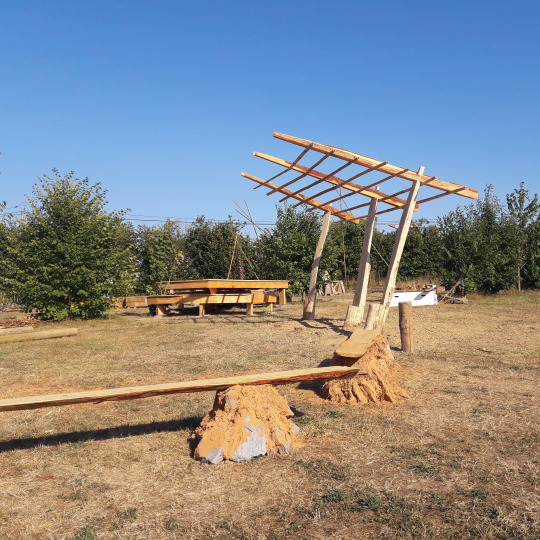

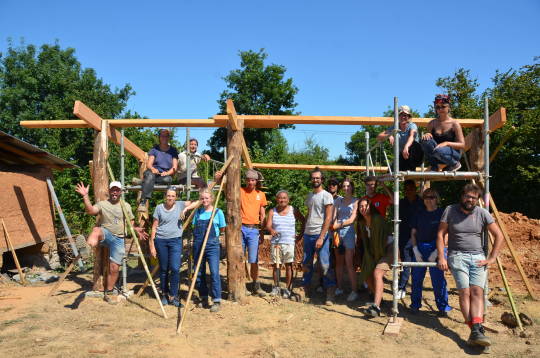
Autour du four à pain
Deux semaines de workshop pour concevoir et construire un espace public villageois autour du nouveau four à pain de Thereval (50).
Un projet porté par l’association habitante Bouillonnant Valthère, en partenariat avec des professionnels de la terre (COBBAUGE) et du bois (TERR’O et K. Maruyama) dans un esprit de mutualisation des savoirs et de création collective.
#le pain de la convivialité#chauffer à blanc#participation#éducation populaire#four à pain#bauge#terre crue#charpente#espace public#vie associative#partage de compétences#entraide#créativité#ruralité heureuse
1 note
·
View note
Text
100 years ago:


Le Vieil Bauge (France) The Twisted Spire of the Eglise St-Symphorien Built in 1856 (photo by Pom on Flickr)
#carte postale#old#bauge#postcard#medieval#monument#vintage#photography#architecture#photo#eglise#vieil bauge#patrimoine#church#french#france#romanesque#anjou
17 notes
·
View notes
Text

Sometimes being surrounded by everyone is the loneliest, because you’ll realize you have no one to turn to.
-- Soraya
(Bauges park, France)
114 notes
·
View notes
Text
#thomas duke of clarence#polls#i had an option for him being a mummy's boy not a daddy's boy (fight me) but i figured that was too niche#she says about a poll full of niche options#the suicidal perversity line comes from i think wylie's commentary on the battle of bauge
15 notes
·
View notes
Text

Bange falls in the Bauges Mountains, Alpine region of France
French vintage postcard
#sepia#bange#photography#the bauges mountains#bauges#vintage#france#falls#postkaart#ansichtskarte#ephemera#carte postale#postcard#mountains#postal#alpine#briefkaart#region#photo#tarjeta#historic#french#postkarte
12 notes
·
View notes
Text
Why Would I Let You Go by Sondre Lerche, live at NRK with the Kringkastingsorkestret, from the album Patience Deluxe
#music#norwegian music#sondre lerche#kringkastingsorkestret#kork#petter winroth#kenny keppel#sara chen#emery cardas#christian k lundqvist#marius knudsen flatby#embrik snerte#orchestra#sidsel walstad#anne karine hauge rønning#bjørn christian svarstad#einar k. bauge#harald aadland#sigurd greve#sondre lerche vaular#christian lundqvist#anne karine hauge#marius flatby#Bandcamp
29 notes
·
View notes
Text

Just found this miniature of Humphrey, Duke of Gloucester from Capgrave's book and he really resembles his brother John a lot.
#both of them have the same nose#and both have the bowl cut just like Henry V#Thomas really should have been more cautious at Bauge#so that we can see some portrayals of Thomas in manuscripts and portraits too#rather than just the tomb effigy#house of lancaster#humphrey duke of gloucester#john duke of bedford
3 notes
·
View notes
Photo

DSC_7621 by www.figedansletemps.com
#chambéry#croixdunivolet#bauges#savoie#france#coucherdesoleil#sunset#brume#mist#fog#brouillard#merdenuage#pollutionlumineuse#ville#citynalpes#chartreusengranier#charvaz#dentduchat#lacdubourget#nature#montagne#mountain#flickr#thingsdavidlikes
4 notes
·
View notes
Text

l’Étoile (the star), Linocut by Les Reliefs
2 notes
·
View notes
Text
#piramal aranya#piramal aranya byculla#piramal aranya 3 bhk#piramal aranya 4 bhk#piramal aranya sample flat#piramal aranya arav#piramal aranya byculla 2 bhk#piramal aranya 2 bhk#piramal aranya rani baug#piramal aranya 5 bhk#piramal aranya byculla mumbai#piramal aranya avyan tower#piramal aranya amenities#piramal aranya building#piramal aranya and
0 notes
Text


Rani Baug, Byculla zoo
0 notes
Text
Dertig jaar geleden: Florian Rousseau is (zogezegd) de eerste wereldkampioen op de kilometer
Volgens de Wielersite was de Fransman Florian Rousseau (foto) in 1993 de eerste wereldkampioen op de kilometer met staande start. Dat kan ik bijna niet geloven. Alleszins was hij in 1992 al wereldkampioen geworden op die afstand bij de juniors en dan stel ik vast dat deze titel al sinds 1977 (de Oost-Duitser Rainer Hönisch) werd toegekend. Bovendien was er in 1906 al een Olympische kampioen over…

View On WordPress
#Alexander Kiritchenko#Arie Van Vliet#Arnaud Tournant#Bill Huck#Chris Hoy#Darryn Hill#Erin Hartwell#Eyk Pokorny#ferdi kübler#Florian Rousseau#François Pervis#Gary Neiwand#Gregory Bauge#Jens Fiedler#José Manuel Moreno#Laurent Gané#Mario Morettini#Martin Vinnicombe#Marty Nothstein#Maximilian Levy#Michael D&039;Almeida#Rolv Hegstad#Russell Mockridge#sid patterson#Stefan Nimke#Taylor Phinney
0 notes
Text
I was thinking about how Margaret Holland's Book of Hours has the arms of Clarence impaling Holland on the same page as an illumination depicting the Arrest of Christ, with both Christ's face and the heraldic shield showing signs of touching/kissing leading Jessica Barker to conclude that Margaret may have seen Thomas Duke of Clarence's violent death as an "echo" of Christ's suffering. Then I remembered two things.
Firstly, that Thomas died on Holy Saturday - the day between Good Friday and Easter Sunday, when the Harrowing of Hell occurred - so the connection with this imagery is very fitting.
Secondly, according to two chronicles, the English defeat at the Battle of Bauge (and thus Thomas's death) occurred due to the treachery of one André Lombart (or Andrew of Lombardy), which is striking when coupled with the manuscript folio.
The first chronicler who mentions this is John Strecche, whose chronicle was written in 1426. He writes:
Consider then that a certain soldier, Andrew of Lombardy, who had one time been a mercenary with the duke of Clarence, and had stolen a quantity of loot from the town of Pontoise, as I have three chapters before this, with a strong hand and cunning treachery, rose up and attacked them all, devoid of any any help. And he murdered the Duke and captured and killed the others at Eastertide in the year of the Incarnation of Our Lord 1421.
The second account comes from Peter Basset and Christopher Hanson, who were writing for Sir John Fastolf and whose account covers the years 1415 to 1429. They give more detail, writing:
The latter [Thomas Duke of Clarence] spoke with André Lombart, who was a traitor twice over, and enquired what power the enemy had and what number they were. Lombart replied that the enemy were only in small number and were not strong enough to acquit themselves even against half of the power of my lord of Clarence, and that he would therefore have a very fine and honourable victory. My lord of Clarence, thinking that the traitor was telling him the truth, gave orders for the deployment of the archers of his company, to wit, Sir [blank], Sir [blank] knights of Portugal, captains of Fresnay-sur-Sarthe, and with them, the bastard of Clarence, and told them to await him in the said location of Beaufort until his return, telling them also that he wished that the other nobles and himself should have the honour of the destruction (of the French). But it turned out quite the opposite, for which reason there was much sadness and sense of loss. My lord of Clarence and the nobles of his company, passing through narrow pathways, encountered the enemy already in battle formation, thanks to the warning of the aforementioned traitor Lombart who had sold the duke. They had set up significant ambushes by their men to prevent the duke and his company escaping without being killed or taken prisoner. The enemy immediately overran the duke on all sides. The duke and his nobles defended themselves as valiantly as they could, but finally my lord of Clarence was pitiously killed and several other lords were taken prisoner or killed.
The predominant narrative of the Battle of Bauge is that of disaster caused by Thomas's reckless rush to battle, this is true in the vast majority of accounts and in historians' coverage of the battle. For John D. Milner, Strecche's account is the "most creative" of English attempts to obscure the role of "English negligence" in the defeat, particularly Thomas's:
Frank Taylor in his edition of the chronicle has commented that Strecche transforms Baugé into an incident of comparatively little significance, thus attempting both to reassure those in England when they heard about it and to preserve Clarence’s reputation. As C. L. Kingsford observed, this must have been some early rumour of the affair which reached England, and in which the truth was concealed.
Milner does find more support for the Lombart story, noting that first (i.e. "Lancastrian") edition of John Hardying's chronicles contains a reference to "‘counsayll of Andrew, fals Lombarde". Milner ultimately concludes:
It is at least possible that such an account became current, and then remained long in the collective memory, in an attempt to mitigate the culpability of the royal commander, Clarence. It is interesting, however, that the authors of the Historia Anglicana and the Vita et Gesta Henrici Quinti make no reference to Andrew Lombard. This suggests that this episode was not known to them and that, if known, it was discounted or that, of itself, it did no credit to the English side.
Given the Vita et Gesta Henrici Quinti is believed to have been commissioned by Sir Walter Hungerford, who had close connections with Henry V, it is perhaps telling that it makes no reference to the Lombart story.
Whether or not it is true, however, what strikes me is the way we can couple the story of Thomas being betrayed to his death with the folio in his wife's Book of Hours which seems to link his death with Christ's betrayal. Even if the story isn't true (which does seem to be the consensus of historians), then I wonder if it's possible Margaret Holland believed it?
References
Jessica Barker, Stone Fidelity: Marriage and Emotion in Medieval Tomb Sculpture (The Boydell Press, 2020)
Anne Curry and Rémy Ambühl, A Soldiers' Chronicle of the Hundred Years War: College of Arms Manuscript M 9 (D. S. Brewer 2022)
Geoffrey Hilton, A Biography of King Henry V Told by John Strecche, Canon of Kenilworth 1426 (2014)
John D. Milner, “The Battle of Baugé, March 1421: Impact and Memory”, History, Vol. 91, No. 4, October 2006
#thomas duke of clarence#margaret holland duchess of clarence#the battle of bauge#blog#i just have so many thoughts and feelings right now#also ask me about my tinhat conspiracy about the battle of bauge
9 notes
·
View notes
